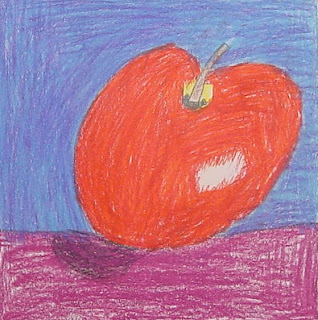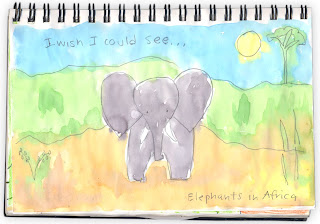 Polymer clay is pretty cool stuff to work with. It has this great ability to stick to itself and not fall apart. I’ve used it with smaller size classes with some great results.
Polymer clay is pretty cool stuff to work with. It has this great ability to stick to itself and not fall apart. I’ve used it with smaller size classes with some great results.1. Each student should get from 6-8 different squares of polymer clay. Start by rolling a large 2" ball, and press it flat to make a base. Next the students are to build up a nose, and added teeth. The ears and hair should be added last, always taking care to keep shapes and colors symmetrical. IMPORTANT: Use baby wipes or the equivalent to clean hands after using polymer clay. It is known to be made of some very unnatural substances that don’t come off with just soap and water.
This artwork was created by my son when he was 8 years old. Mom is proud!
This artwork was created by my son when he was 8 years old. Mom is proud!


 11:36 AM
11:36 AM
 keprok
keprok





























